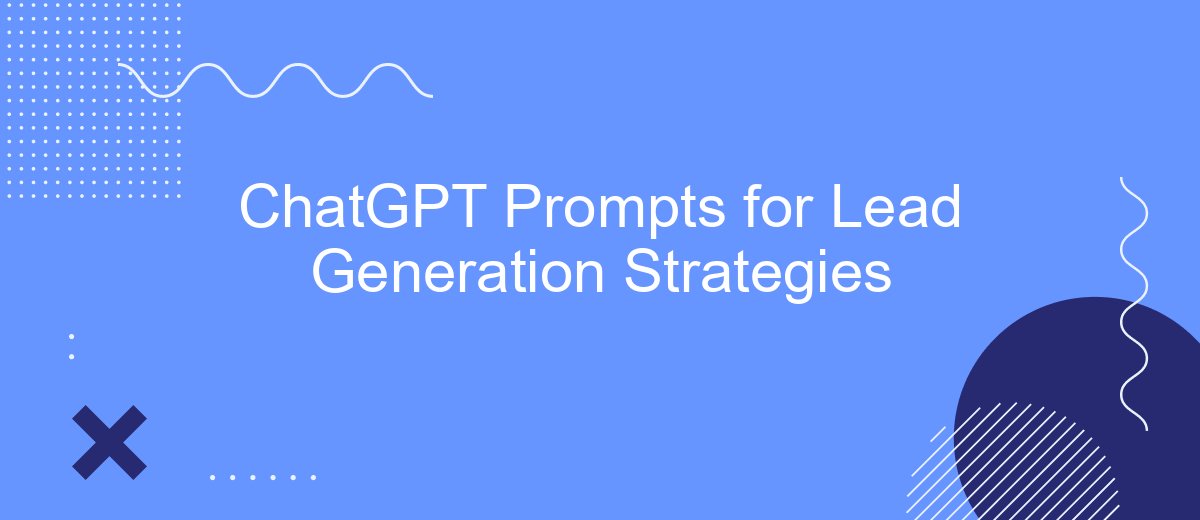
In the fast-paced world of sales, generating high-quality leads efficiently is crucial for driving business growth and staying ahead of the competition. Traditional lead generation methods, while effective, can often be time-consuming, requiring significant manual effort and resources. Moreover, these methods frequently fall short when it comes to scalability, making it challenging for businesses to consistently capture and qualify leads at a high volume. This is where ChatGPT for lead generation can make a significant difference. As artificial intelligence continues to evolve, advanced tools like ChatGPT are becoming powerful assets for businesses looking to streamline and enhance their lead generation efforts. With the ability to automate and optimize various stages of the lead generation process, ChatGPT can help businesses engage with potential customers more efficiently and effectively.
Developed by OpenAI, ChatGPT is an AI-driven language model that can assist companies in a wide range of tasks, including lead generation. By utilizing its advanced natural language processing (NLP) capabilities, ChatGPT can communicate with website visitors in real-time, respond to inquiries, and even qualify leads based on specific criteria predefined by the business. This reduces the need for manual intervention and allows sales teams to focus on the most promising prospects. In this article, we will explore how ChatGPT can be leveraged for lead generation, its key benefits, and how it can be seamlessly integrated into your sales strategy to drive higher conversions.
ChatGPT for Lead Generation: What is ChatGPT and How Does It Work for Lead Generation?
ChatGPT for lead generation leverages the advanced natural language processing (NLP) capabilities of AI to interact with users in real-time. It can understand and generate human-like text, making it highly effective for automating customer interactions on websites, social media platforms, and through email. Unlike traditional chatbots that follow simple scripts, ChatGPT can engage in dynamic conversations, asking questions, offering solutions, and guiding potential leads through your sales funnel.
The primary role of ChatGPT in lead generation is to act as a virtual sales assistant that helps qualify leads before they even reach your sales team. It can ask targeted questions to gather essential information, such as a lead’s industry, budget, or specific needs. Based on the responses, it can either pass the lead along to a human representative or continue nurturing the lead further down the sales funnel with personalized follow-ups.
How ChatGPT Enhances Lead Generation
24/7 Availability and Instant Engagement
One of the most significant advantages of using ChatGPT for lead generation is its ability to operate around the clock. In today’s global economy, businesses cannot afford to miss out on potential leads simply because it’s after hours. ChatGPT can engage with visitors at any time, answering their questions, offering assistance, and collecting lead information without requiring human intervention. This immediate engagement helps to capture leads while they’re still interested, preventing them from slipping through the cracks.
Personalized Conversations
ChatGPT can be programmed to carry out personalized conversations with leads, making them feel heard and valued. Instead of offering generic responses, the AI can tailor its interactions based on user inputs. For example, if a visitor mentions a specific product or service they are interested in, ChatGPT can provide detailed information relevant to their inquiry. This level of personalization helps to build trust and rapport, increasing the likelihood of converting visitors into qualified leads.
Data Collection and Insights
Another powerful feature of ChatGPT for lead generation is its ability to collect valuable data on your prospects. During interactions, ChatGPT can gather information such as contact details, company size, pain points, and purchasing intentions. This data can be used to enrich your CRM, helping your sales team to tailor their outreach and improve follow-up efforts. Additionally, ChatGPT can track user behavior and provide insights into which aspects of your website or offering are attracting the most interest, helping you fine-tune your marketing strategy.
How to Integrate ChatGPT for Lead Generation
Implement ChatGPT on Your Website
Start by integrating ChatGPT on your website to interact with visitors in real-time. Add a chat widget or a pop-up that encourages visitors to engage with the AI assistant. The AI can be programmed to welcome users, ask relevant questions, and provide instant responses based on user input.
Leverage ChatGPT for Social Media Lead Generation
You can also integrate ChatGPT with your social media platforms, such as Facebook Messenger, LinkedIn, and WhatsApp, to engage with potential leads. By doing so, you can connect with prospects where they are already active and offer personalized assistance in real time.
Use ChatGPT for Email Follow-Ups
ChatGPT can also help automate email follow-ups with potential leads. Once a lead has been collected, the AI can send out personalized messages to nurture the relationship, offer additional resources, and drive them further down the sales funnel.
Train ChatGPT for Specific Lead Criteria
Customize ChatGPT to align with the lead qualification process, set decision trees, and pre-qualify leads with precision, reducing manual follow-up time.
In conclusion, ChatGPT for lead generation offers a game-changing opportunity for businesses looking to streamline their sales process and engage with potential leads more effectively. By automating lead qualification, offering personalized interactions, and providing valuable insights, ChatGPT can significantly boost your sales pipeline. Whether you are a small business or a large enterprise, leveraging ChatGPT’s capabilities can save time, improve lead conversion rates, and ultimately drive more revenue. As AI technology continues to evolve, integrating tools like ChatGPT into your lead generation strategy is an essential step toward staying competitive in today’s fast-paced digital landscape.

